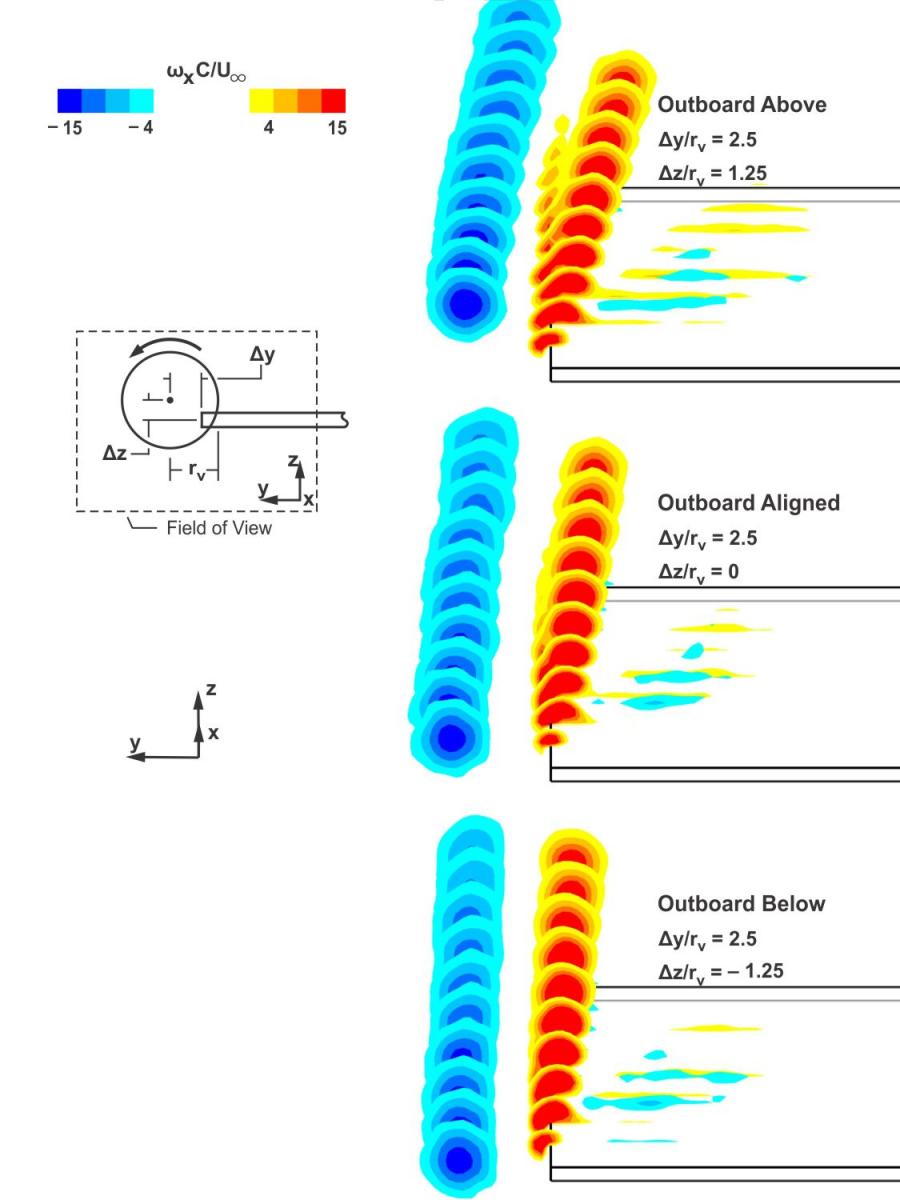Vortex Impingement on an Airfoil
Interest in vortex-wing interactions has risen in recent years due to a variety of applications, which include; the tip vortex from a leading aircraft or biological flier impinging on its downstream counterpart; vortices shed from the tips of preceding blades of a helicopter rotor incident upon a downstream blade; vortices shed from the forebody or canard of an aircraft impinging on a downstream tail or fin; and vortices generated from rotor blades interacting with downstream stator blades in turbomachinery. While such interactions can lead to positive consequences, such as in formation flight, they are generally undesirable, and can cause unsteady loading of the aerodynamic component.

The figure above shows iso surfaces of the streamwise velocity deficit along the axis of the vortex incident upon the leading edge of the wing. These surfaces of velocity deficit increase in both radius and magnitude as the spanwise impingement location Δy/rv is displaced from outboard to inboard. For all but the outboard case, all levels of iso-surfaces increase in radius near the leading edge of the follower wing.

This figure shows slices of streamwise velocity along the chord of the follower wing, for several different vertical impingement cases. As the inpingment location moves upwards, the vortex dipole moves further inboard.
